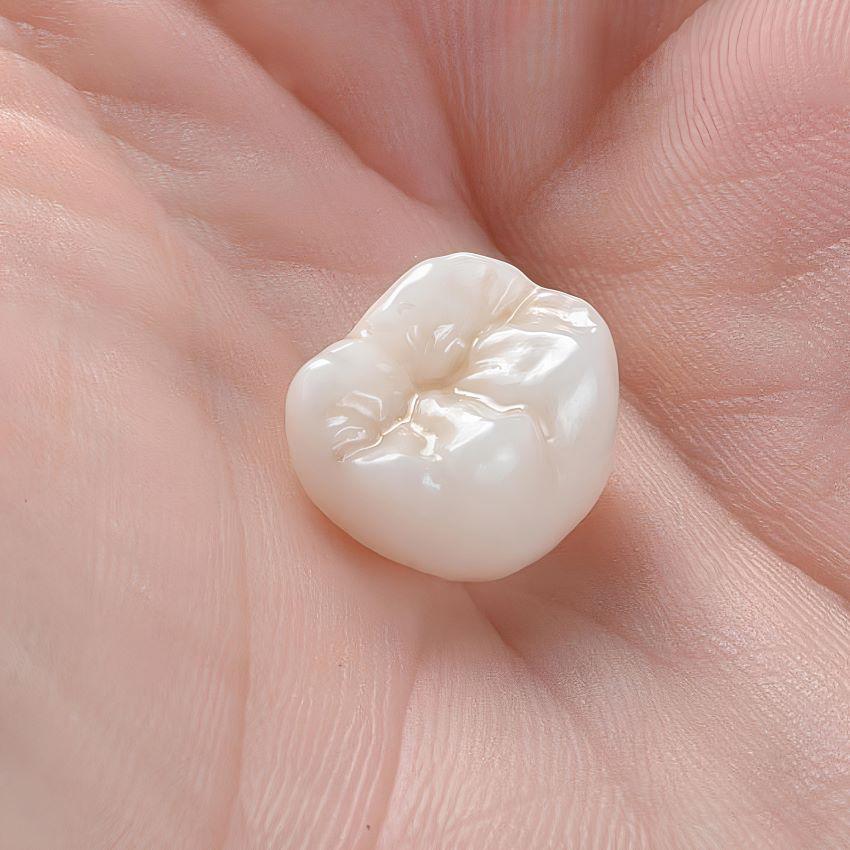Dental crowns, or caps, are commonly used to restore damaged or weakened teeth. By covering the visible portion of a tooth, a crown can improve both function and aesthetics. Crowns can be used after a root canal, to restore a broken tooth, or for cosmetic reasons like covering misshapen or discolored teeth.
Choosing the right type of dental crown is key to ensuring a successful, long-lasting restoration. In this guide, we’ll explore the different types of crowns, their benefits, and which option may work best for you.
Why Do You Need a Dental Crown?
Dental crowns serve many purposes:
1. Protection: Crowns prevent further damage to weakened or cracked teeth.
2. Restoration: They restore the shape and strength of broken or worn-down teeth.
3. Aesthetic Improvement: Crowns can cover discolored or misshapen teeth, improving appearance.
4. Support: Crowns are also used to cover dental implants, acting as the visible replacement tooth.
Now let’s look at the different types of crowns available.
Types of Dental Crowns
1. Porcelain Crowns
Porcelain crowns are a popular choice, especially for front teeth, due to their natural appearance. Made from ceramic, they can be customized to match the color and translucency of your teeth.
Advantages:
Aesthetic appeal: Porcelain looks very natural.
Stain resistance: Porcelain is less likely to stain than natural teeth.
Biocompatibility: Metal-free, reducing allergic reaction risk.
Disadvantages:
Durability: Porcelain is prone to chipping, especially on back teeth.
Cost: They are typically more expensive.
Best for: Front teeth where appearance matters most.
2. Porcelain-Fused-to-Metal (PFM) Crowns
PFM crowns combine the strength of metal with the appearance of porcelain. A metal base provides durability, while the outer porcelain layer offers a natural look.
Advantages:
Strength: PFM crowns are strong and ideal for both front and back teeth.
Appearance: Porcelain can be color-matched to your natural teeth.
Disadvantages:
Visible metal line: Over time, the metal may become visible at the gum line.
Wear: Porcelain can wear down opposing teeth over time.
Best for: Both front and back teeth, balancing strength and aesthetics.
3. Gold Crowns
Gold crowns are made from a gold alloy or mixed with other metals. While not the most aesthetic option, they are highly durable and resistant to wear.
Advantages:
Longevity: Gold crowns can last for decades.
Durability: They are less likely to fracture or wear down.
Gentle on opposing teeth: Gold is softer than enamel.
Disadvantages:
Aesthetic: Gold crowns are not tooth-colored, making them less appealing for visible areas.
Cost: Gold can be expensive.
Best for: Back teeth, where durability is more important than appearance.
4. Zirconia Crowns
Zirconia crowns are a newer option, known for their strength and natural appearance. Made from a durable ceramic material, they can be an excellent choice for both front and back teeth.
Advantages:
Strength: Zirconia is highly durable, ideal for those who grind their teeth.
Aesthetics: They can be color-matched to your teeth.
Biocompatibility: Metal-free and hypoallergenic.
Disadvantages:
Abrasiveness: Zirconia can wear down opposing teeth if not polished correctly.
Best for: Both front and back teeth, especially for patients needing extra strength.
5. All-Resin Crowns
All-resin crowns are an affordable option, made entirely of composite resin. However, they are not as durable as other types.
Advantages:
Cost-effective: Resin crowns are less expensive.
Aesthetic: They can be matched to natural teeth.
Disadvantages:
Durability: Resin is prone to cracking and wears down faster.
Longevity: These crowns may not last as long as porcelain or metal ones.
Best for: Temporary crowns or patients on a budget.
6. Temporary Crowns
Temporary crowns are made from acrylic or resin and are used while waiting for a permanent crown to be created. They offer basic protection and functionality during the interim period.
Advantages:
Protects teeth until the permanent crown is ready.
Disadvantages:
Not as durable as permanent crowns.
How to Choose the Right Dental Crown
Selecting the best dental crown depends on several factors, such as:
1. Location: Front teeth require more aesthetic consideration, while back teeth need crowns that can withstand chewing forces.
2. Durability: Those who grind their teeth or have a heavy bite may require stronger materials like zirconia or gold.
3. Aesthetics: If appearance is a top priority, porcelain or zirconia crowns are ideal.
4. Cost: Budget plays a role in your decision. While gold and porcelain crowns can be more expensive, resin crowns are a more affordable alternative.
Conclusion: Finding the Right Crown
Dental crowns are a versatile solution for restoring damaged teeth. Whether you need a crown for protection, restoration, or aesthetics, there are several options to fit your needs. Consult our dental team at your next appointment to determine which type of crown is best for you. With the right care and maintenance, your dental crown can restore your smile and provide long-lasting comfort and function!



